-
History & Society
- Education in Pre-war Hong Kong
- History of Taikoo Sugar Refinery
- Hong Kong Products Exhibition
- Local Festivals Around the Year
- Post-war Industries
- Pre-war Industry
- The Hong Kong Jockey Club Archives
- Tin Hau Festival
- Memories We Share: Hong Kong in the 1960s and 1970s
- History in Miniature: The 150th Anniversary of Stamp Issuance in Hong Kong
- A Partnership with the People: KAAA and Post-war Agricultural Hong Kong
- The Oral Legacies (I) - Intangible Cultural Heritage of Hong Kong
- Hong Kong Currency
- Hong Kong, Benevolent City: Tung Wah and the Growth of Chinese Communities
- The Oral Legacies Series II: the Representative List of the Intangible Cultural Heritage of Hong Kong
- Braving the Storm: Hong Kong under Japanese Occupation
- A Century of Fashion: Hong Kong Cheongsam Story
Geography & EnvironmentArt & Culture- Calendar Posters of Kwan Wai-nung
- Festival of Hong Kong
- Ho Sau: Poetic Photography of Daily Life
- Hong Kong Cemetery
- Sketches by Kong Kai-ming
- The Culture of Bamboo Scaffolding
- The Legend of Silk and Wood: A Hong Kong Qin Story
- Journeys of Leung Ping Kwan
- From Soya Bean Milk To Pu'er Tea
- Applauding Hong Kong Pop Legend: Roman Tam
- 他 FASHION 傳奇 EDDIE LAU 她 IMAGE 百變 劉培基
- A Eulogy of Hong Kong Landscape in Painting: The Art of Huang Bore
- Imprint of the Heart: Artistic Journey of Huang Xinbo
- Porcelain and Painting
- A Voice for the Ages, a Master of his Art – A Tribute to Lam Kar Sing
- Memories of Renowned Lyricist: Richard Lam Chun Keung's Manuscripts
- Seal Carving in Lingnan
- Literary Giant - Jin Yong and Louis Cha
-
History & SocietyGeography & EnvironmentArt & Culture
-
View Oral History RecordsFeatured StoriesAbout Hong Kong Voices
-
Hong Kong Memory
- Collection
- All Items
- Art of Qin Making
Recently VisitedArt of Qin Making
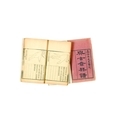
- Yuguzhai Qinpu (Yuguzhai Qin Handbook)
The first edition of the Yuguzhai Qinpu (Yuguzhai Qin Handbook), written by Zhu Fengjie of the Qing Dynasty (1644-1911), was published in 1855. Zhu Fengjie, also known as Tongjun, was a native of Pucheng, Fujian and founder of the Pucheng School of qin. The Yuguzhai Qinpu does not contain any qin tablature. In fact, it is a compilation of the author’s theories on the qin and a discussion covering the aspects of music temperament, qin making, qin practice, and qin playing.
Very detailed information on qin construction can be found in the chapter titled “Qin Construction” in volume 2. Most of the qin making tools described in this volume are still in use today. These include, among others, planes, axes, saws, rasps, drills, round chisels, and square chisels.
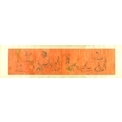
- Zhuoqintu (Illustration of Qin Making)
Gu Kaizhi of the Eastern Jin period was said to be the author of the Zhuoqintu (Illustration of Qin Making). A Song Dynasty silk copy currently resides in the Palace Museum in Beijing. The scroll seen here is a fair copy (2013) made by Li Fei, a member of the Choi Chang Sau Qin Making Society. The Zhuoqintu depicts different scenes of ancient literati directing craftsmen in the process of qin making. People in the painting are chopping wood, making strings, or testing the qin. Some can be seen observing and giving instructions.
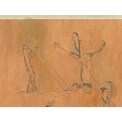
- Wood chopping [extracted from Zhuoqintu (Illustration of Qin Making)]
Gu Kaizhi of the Eastern Jin period was said to be the author of the Zhuoqintu (Illustration of Qin Making). A Song Dynasty silk copy currently resides in the Palace Museum in Beijing. This extracted piece of scroll - wood chopping is from a fair copy made by Li Fei, a member of the Choi Chang Sau Qin Making Society. The Zhuoqintu depicts different scenes of ancient literati directing craftsmen in the process of qin making. People in the painting are chopping wood, making strings, or testing the qin. Some can be seen observing and giving instructions.
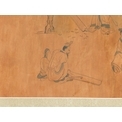
- Qin shaping [extracted from Zhuoqintu (Illustration of Qin Making)]
Gu Kaizhi of the Eastern Jin period was said to be the author of the Zhuoqintu (Illustration of Qin Making). A Song Dynasty silk copy currently resides in the Palace Museum in Beijing. This extracted piece of scroll - qin shaping is from a fair copy made by Li Fei, a member of the Choi Chang Sau Qin Making Society. The Zhuoqintu depicts different scenes of ancient literati directing craftsmen in the process of qin making. People in the painting are chopping wood, making strings, or testing the qin. Some can be seen observing and giving instructions.
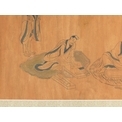
- Sharpening a blade [extracted from Zhuoqintu (Illustration of Qin Making)]
Gu Kaizhi of the Eastern Jin period was said to be the author of the Zhuoqintu (Illustration of Qin Making). A Song Dynasty silk copy currently resides in the Palace Museum in Beijing. This extracted piece of scroll - sharpening a blade is from a fair copy made by Li Fei, a member of the Choi Chang Sau Qin Making Society. The Zhuoqintu depicts different scenes of ancient literati directing craftsmen in the process of qin making. People in the painting are chopping wood, making strings, or testing the qin. Some can be seen observing and giving instructions.
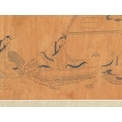
- Hollowing the cavity belly [extracted from Zhuoqintu (Illustration of Qin Making)]
Gu Kaizhi of the Eastern Jin period was said to be the author of the Zhuoqintu (Illustration of Qin Making). A Song Dynasty silk copy currently resides in the Palace Museum in Beijing. This extracted piece of scroll - hollowing the cavity belly is from a fair copy made by Li Fei, a member of the Choi Chang Sau Qin Making Society. The Zhuoqintu depicts different scenes of ancient literati directing craftsmen in the process of qin making. People in the painting are chopping wood, making strings, or testing the qin. Some can be seen observing and giving instructions.
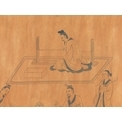
- String making [extracted from Zhuoqintu (Illustration of Qin Making)]
Gu Kaizhi of the Eastern Jin period was said to be the author of the Zhuoqintu (Illustration of Qin Making). A Song Dynasty silk copy currently resides in the Palace Museum in Beijing. This extracted piece of scroll - string making is from a fair copy made by Li Fei, a member of the Choi Chang Sau Qin Making Society. The Zhuoqintu depicts different scenes of ancient literati directing craftsmen in the process of qin making. People in the painting are chopping wood, making strings, or testing the qin. Some can be seen observing and giving instructions.
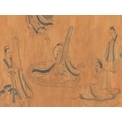
- Tone testing [extracted from Zhuoqintu (Illustration of Qin Making)]
Gu Kaizhi of the Eastern Jin period was said to be the author of the Zhuoqintu (Illustration of Qin Making). A Song Dynasty silk copy currently resides in the Palace Museum in Beijing. This extracted piece of scroll - tone testing is from a fair copy made by Li Fei, a member of the Choi Chang Sau Qin Making Society. The Zhuoqintu depicts different scenes of ancient literati directing craftsmen in the process of qin making. People in the painting are chopping wood, making strings, or testing the qin. Some can be seen observing and giving instructions.
Copyright © 2012 Hong Kong Memory. All rights reserved.
| Set Name |





